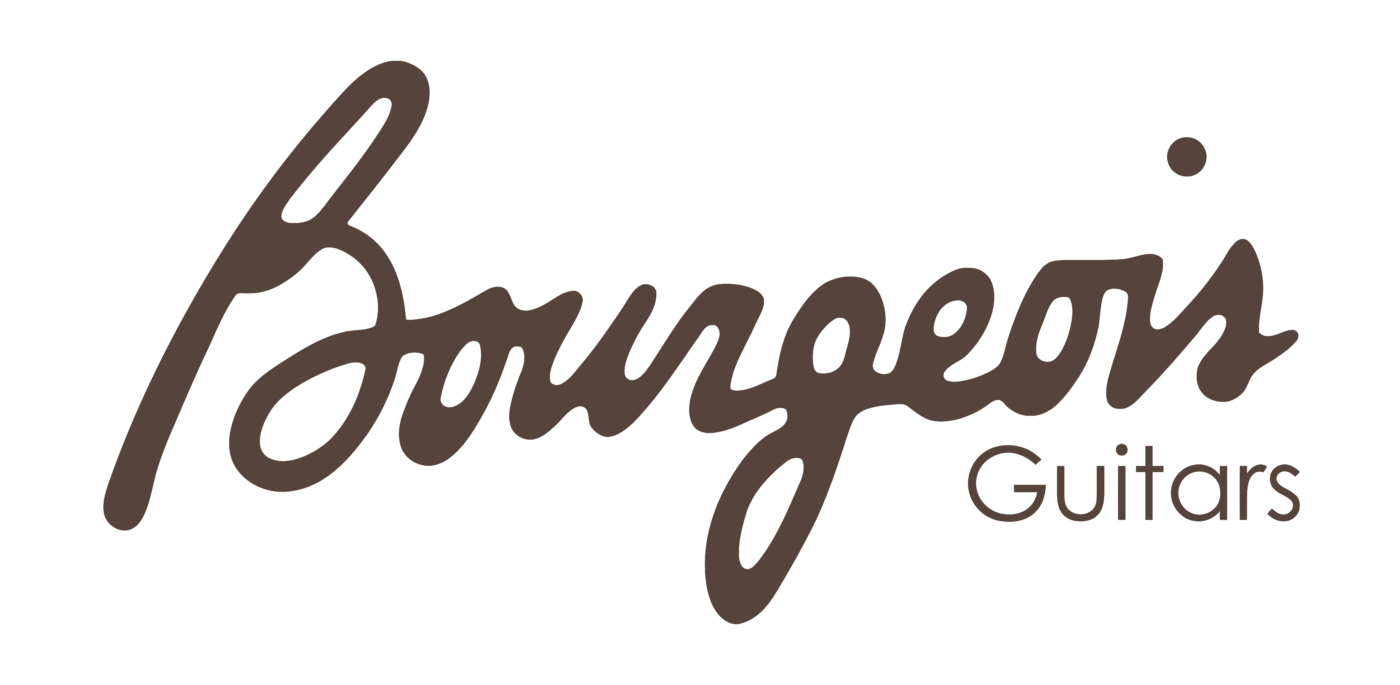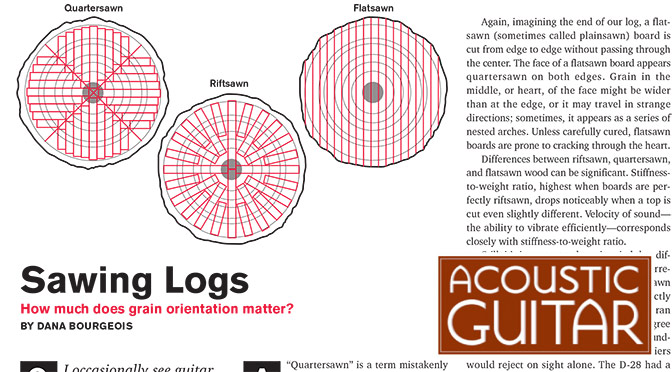Homepage News, Guitar Guru
Guitar Guru – Grain Orientation
Dana Bourgeois contributes the monthly Guitar Guru column to Acoustic Guitar Magazine. If you a question you’d like Dana to address in an upcoming article, please submit it to [email protected].
Download the PDF of this article here
Sawing Logs – How much does grain orientation matter?
Q: I occasionally see guitar woods described as quartersawn or flatsawn. What exactly is the difference? How does grain orientation affect the sound of a guitar, and what should I look for when selecting a guitar? – Daisy Robertson Lawrence, Kansas
A:“Quartersawn” is a term mistakenly used to describe guitar tops—which are actually riftsawn. Imagine the round end of a log. To quartersaw, first split the log into equal quarters. From each quarter cut parallel boards. A riftsawn board is sawn from the center to an edge, rotating the log around its center to produce radially oriented boards. On the end of a riftsawn board, annular growth rings run perpendicular to its face; on the face, annular rings appear as straight lines running parallel to the long edge.
Spruce, cedar, and redwood guitar tops are riftsawn, with the familiar annular grain pattern running parallel to the strings and the perpendicular end grain visible on the edge of the soundhole. On the face, cross-grain, medullary rays, or “silk,” run perpendicular to the annular rings, though only when the top is perfectly oriented relative to the radius of the log. Backs and sides are usually either quartersawn or flatsawn, but rarely riftsawn.
Again, imagining the end of our log, a flatsawn (sometimes called plainsawn) board is cut from edge to edge without passing through the center. The face of a flatsawn board appears quartersawn on both edges. Grain in the middle, or heart, of the face might be wider than at the edge, or it may travel in strange directions; sometimes, it appears as a series of nested arches. Unless carefully cured, flatsawn boards are prone to cracking through the heart.
Differences between riftsawn, quartersawn, and flatsawn wood can be significant. Stiffnessto- weight ratio, highest when boards are perfectly riftsawn, drops noticeably when a top is cut even slightly different. Velocity of sound— the ability to vibrate efficiently—corresponds closely with stiffness-to-weight ratio.
Still, it’s important to keep in mind that different logs have varying stiffnesses and corresponding sound velocities. A perfectly riftsawn top may be less stiff than a not-so-perfectly sawn top from a different log. I recently ran into a prewar D-28 that had nearly a 45-degree (vs. 90-degree) grain on the edge of the soundhole— a top that most contemporary luthiers would reject on sight alone. The D-28 had a classic mid-’30s voice, illustrating that grain orientation doesn’t always trump all other factors.
In some higher-density woods, grain orientation has less effect on velocity of sound. Flatsawn Brazilian rosewood may well have greater velocity of sound than riftsawn or quartersawn examples of softer woods such as mahogany, walnut, or maple. Some luthiers, including my violinmaker friend Jonathan Cooper, actually prefer flatsawn backs for the particular way they color sound—again suggesting that ingredients are only important in the context of a recipe.
Happily, there are many ways to season the stew. My recommendation to players is to let the luthiers worry about how wood gets sawn and to select a guitar for its sound, rather than by orientation of grain. AG

